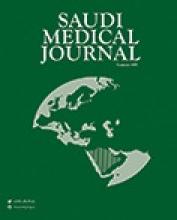Abstract
OBJECTIVE: To assess the effectiveness of using rat liver tissues (RLT) for the screening of connective tissue disease (CTD).
METHODS: Results of patient samples, submitted to the Clinical Immunology Laboratory, Birmingham Heartlands Hospital, Birmingham, United Kingdom for investigation of CTD between 2001 and 2002, were analyzed. Positive results for anti-double stranded DNA (dsDNA) antibodies and anti-extractable nuclear antigen (ENA) antibodies were correlated with the results of the corresponding anti-nuclear antibodies (ANA), obtained by indirect immunofluorescence (IIF) using RLT. In the second part of the study samples that were previously tested positive for anti-ENA or anti-dsDNA antibodies, were investigated prospectively for ANA using both RLT and human epithelial (Hep-2) cell line.
RESULTS: The IIF method employing RLT for screening of CTD, failed to detect ANA patterns from 45% and 25% of patient samples know to contain antibodies to dsDNA and ENA. The anti-dsDNA antibodies that failed to be detected by the RLT were of low avidity and their clinical significance is unknown. In contrast, the antibodies to ENA were mostly directed against the Ro antigen and a clear marker of CTD. Hep-2 cell line enhanced the detection rate of anti-ENA antibodies, particularly those against the Ro antigen. In contrast, and like RLT, Hep-2 cell line failed to detect the low avidity anti-dsDNA antibodies.
CONCLUSION: The present study has clearly shown that RLT are ineffective for screening of CTD. It is recommended that laboratories, which are still using these tissues, should consider replacing them with the Hep-2 cell line.
- Copyright: © Saudi Medical Journal
This is an open-access article distributed under the terms of the Creative Commons Attribution-Noncommercial-Share Alike 3.0 Unported, which permits unrestricted use, distribution, and reproduction in any medium, provided the original work is properly cited.






